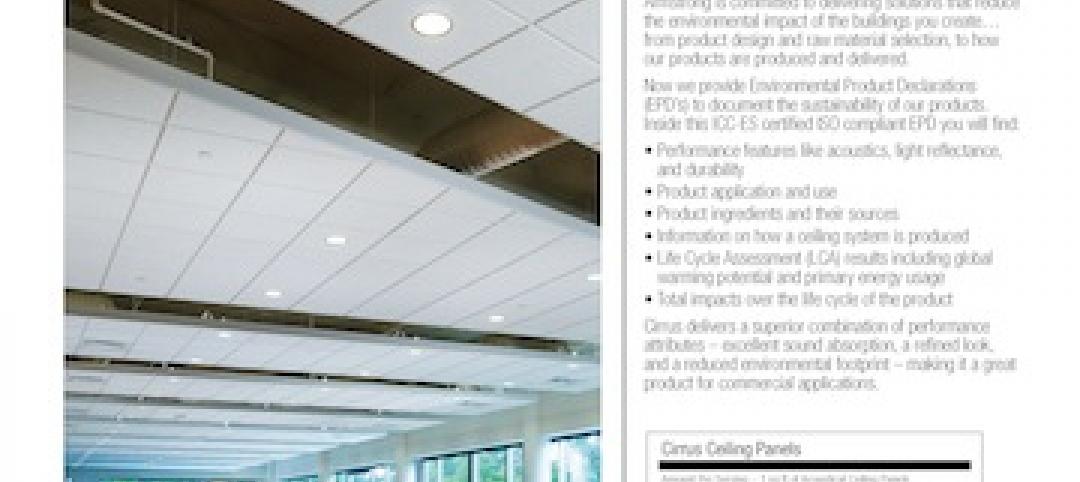States from coast to coast have signed a joint agreement to accelerate the transition to pollution-free residential buildings by significantly expanding heat pump sales to meet heating, cooling, and water heating demand in coming years. The Memorandum of Understanding (MOU), led by the Northeast States for Coordinated Air Use Management (NESCAUM), has been signed by directors of environmental agencies from California, Colorado, Maine, Maryland, Massachusetts, New Jersey, New York, Oregon, and Rhode Island.
Under the MOU, these states have set a shared goal for heat pumps to meet at least 65% of residential-scale heating, air conditioning and water heating shipments by 2030 and 90% by 2040 across the participating states. States will also collaborate to collect market data, track progress, and develop an action plan within a year to support the widespread electrification of residential buildings.
This MOU builds on a September 2023 commitment from the U.S. Climate Alliance’s member states and territories to quadruple heat pump installations by 2030.
Efforts to Transition to Clean Residential Buildings
“Heat pumps and building electrification are the future for healthier homes and a thriving green economy,” said Maryland Department of the Environment Secretary Serena McIlwain. “This multi-state partnership will help Maryland meet its ambitious climate goals and strengthen a coalition of states for cleaner air and better health outcomes.”
Buildings are a hidden source of air pollution, which comes from combustion of fossil fuels in furnaces, boilers, and water heaters. According to NESCAUM, fossil-fueled heating equipment across the participating states emits annually over 138,000 tons of smog-forming nitrogen oxides (NOx) and 6,000 tons of fine particulate matter, causing increased risk of heart attack, asthma events, premature death, and many other adverse health outcomes. Buildings also annually emit 173 million metric tons of CO2 across participating states.
To pave the way for widespread adoption of heat pumps, the agreement emphasizes collaboration with key stakeholders, including heat pump manufacturers and HVAC installers. The transition to efficient electric heating, cooling, and water heating has the support of major market players and manufacturers.
“To achieve our shared decarbonization goals, we need to send an unmistakable signal to the marketplace that zero-emission homes are the future. This agreement does that,” said Matt Rusteika, Director of Market Transformation, Building Decarbonization Coalition. “We applaud NESCAUM and state leaders for a commitment that is ambitious, flexible, and pragmatic.”
To lead by example, states signing the NESCAUM-led MOU committed to promote installation of zero-emission, grid-interactive technologies in existing state buildings. States also seek to direct at least 40% of efficiency and electrification investments to benefit low-income households facing high energy burdens and communities historically burdened with elevated air pollution levels.
A recent letter from business-focused Ceres united 24 businesses, investors, and building owners and operators in stating support to accelerate heat pump adoption. Last year, ten of the nation’s largest manufacturers committed to help California achieve its target of six million heat pumps by 2030.
“State policy is critical to accelerating the adoption of building technologies that are good for the climate and good for business. Initiatives that encourage collaboration across state lines to develop best practices are essential to accelerating this transition,” said Alli Gold Roberts, Senior Director of State Policy, Ceres.
Related Stories
| Sep 7, 2012
The keys to success in the K-12 school market
When educators and school administrators describe their vision for new K-12 school buildings as ‘21st-century learning spaces,’ they’re not exaggerating. Many new schools are truly different in concept from their counterparts of only a few years ago.
| Aug 2, 2012
BD+C University: PVC Single-Plies as Sustainable Roofing Systems
You can earn 1.0 AIA credit + HSW + SD by taking this course.
| Jul 2, 2012
Plumosa School of the Arts earns LEED Gold
Education project dedicated to teaching sustainability in the classroom.
| Jun 22, 2012
USGBC Joins Six Major Organizations at Rio+20 to Launch the Global Initiative on Urban Resilience
Global initiative is designed to spur building and infrastructure development, create new investment opportunities, and foster community action around the world
| Jun 19, 2012
Armstrong Issues Environmental Product Declarations On Nine Popular Ceiling and Steel Suspension Systems
Transparent new documentation allows end users to make more informed decisions when selecting ceilings for projects
| Jun 18, 2012
Tremco Commercial Sealants & Waterproofing Unveils Sustainable Building Solutions Test Facility
State-of-the-art facility provides a controlled testing environment of air and moisture infiltration/exfiltration in air barrier systems and building enclosures
| Jun 15, 2012
InPro’s bio-content becomes Cradle-to-Cradle CertifiedCM Silver
Two main components of G2 Blend formula now C2C Certified Silver.
| Jun 13, 2012
Free webinar on Designing and Building Green Schools scheduled for June 20
USGBC Center for Green Schools and other experts to present practical tips.
| Jun 13, 2012
Steven L. Newman Real Estate Institute to hold energy asset conference for property owners, senior real estate managers
Top-level real estate professionals have been ignored as the industry has pushed to get sustainability measures in place.
| Jun 8, 2012
Living Building Challenge wins the 2012 Buckminster Fuller Challenge
The Living Building Challenge was chosen from a pool of 122 of entries from around the world.


















